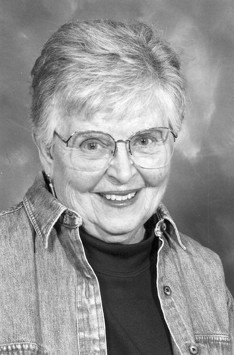Rabbitbrush Rambler: Sheep country

Even before farming began in the San Luis Valley, some courageous shepherds brought small flocks of sheep, probably of mixed breed, possibly in the 1839s during summers. They came from today’s northern New Mexico, because available land was becoming scarce there.
With settlement in the San Luis Valley, sheep provided some mutton and milk but were more essential for basic necessities of daily life that were made by weaving wool – clothing, blankets, lean-tos, rugs, bed covers, window coverings, bags, and rags when the fabrics wore out. Only ladies, the doñas, had enough leisure to do fancy colcha embroidery and crochet in those days.
Goats for milk were common, and their hair often was used for weaving utilitarian items. Its scratchiness made this hair less desirable than sheep’s wool for clothing.
The genes of most livestock in the Valley were nothing fancy, just a mix of various breeds. One of them was a strange-looking sheep called the Churro, and it is born that way with horns – often four of them. They have long, silky hair over a short wooly undercoat. When a Churro gets sheared, it is more like getting a haircut than like a shearing. The lustrous fiber is prized by fiber workers, and the breed is now making a comeback in New Mexico’s Chama River Valley in a cooperative project.
It came to Mexico from Castile with Spaniards in the early1600s. A more normal-appearing Spanish breed was the Merino that yielded better meat than Churros and a good-quality of wool. Such breeds and others interbred and came north with the conquerors and settlers of the Rio Grande Valley.
When Anglo farmers and ranchers arrived in the West in the latter part of the 1800s, they brought others— especially very large numbers of good meat producers like Rambouillet. At about the same time, railroad transportation enabled shipping to markets in the East. As a result, wool warehouses and banks at Antonito and La Jara gained major importance in the economic life of the Valley and in other parts of the West.
Local ranchers and hired men often did their own sheep shearing, and some crews went from ranch to ranch, but the great expansion of huge flocks in some parts of the West caused crews to travel to other parts of the state and farther afield like Wyoming or Nevada. Some of these workers traveled seasonally from the southern part of the San Luis Valley. One of the especially skillful shearers was J.C. Lobato, the sheriff of Costilla County back home.
At large ranches there were chutes and sheds, and there might be more than a few shearers in a shed to handle the work. Traditionally, shearing had all been done with hand shears, until electric shears speeded up the operation and might take only a couple of minutes, with a crew working like clockwork.
The animals did not have to endure much time in the shed. When a sheep entered it, a worker laid the animal on a wooden bench; the shearer clipped off the fleece rapidly, all in one piece if he was skillful; another threw the fleece, called a skirt, onto the wool table; another worker ushered the animal from the shed through the door on the far side into a pen with the other now-skinny-looking sheep; and in the shed a stamper stomped on the fleece, stuffed it into a large bag that weighed about 300 pounds when full, and tied it shut. To help keep the animals calm, no yelling took place during the assembly line’s activities.
Once, I watched a sheep shearing at a monastery that had a small, efficient crew of monks with one professional, hired shearer. With a warning in advance to be quiet, I would be welcome. Working in the small three-sided shearing shed and using hand shears instead of electric, they smoothly went through the same rituals with the small flock that would have taken place at a huge ranch. The monks’ shed was almost eerily silent except for occasional sacrilegious baas from the pen.
To learn more about fiber, including hemp, come over to Fort Garland Museum next Saturday for the festival called “From Land to Hand: Fiber Arts in the San Luis Valley,” next Saturday, 9 a.m. to 5 p.m.



